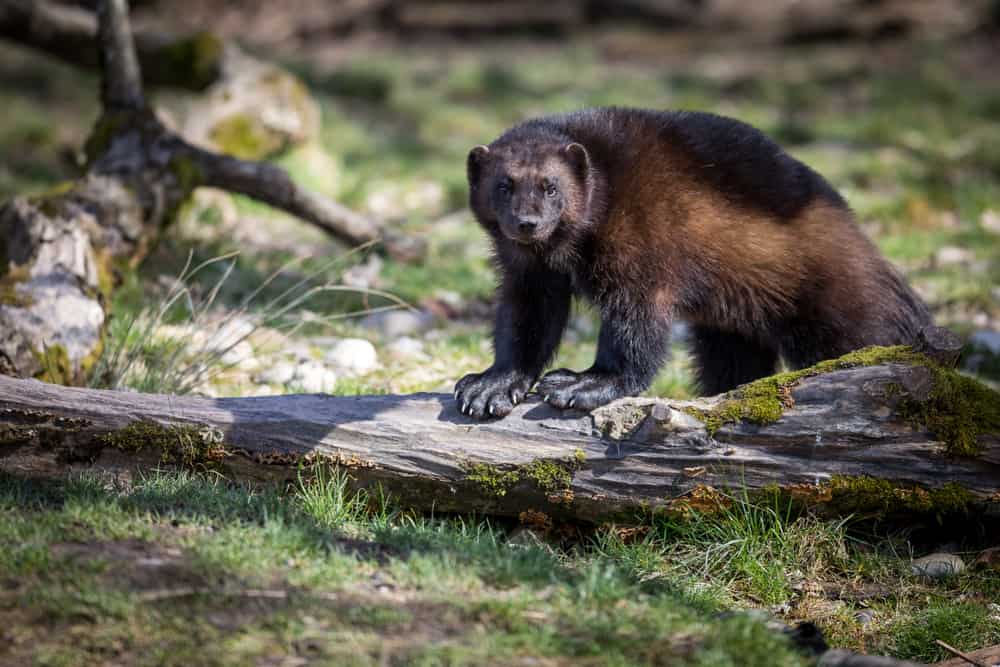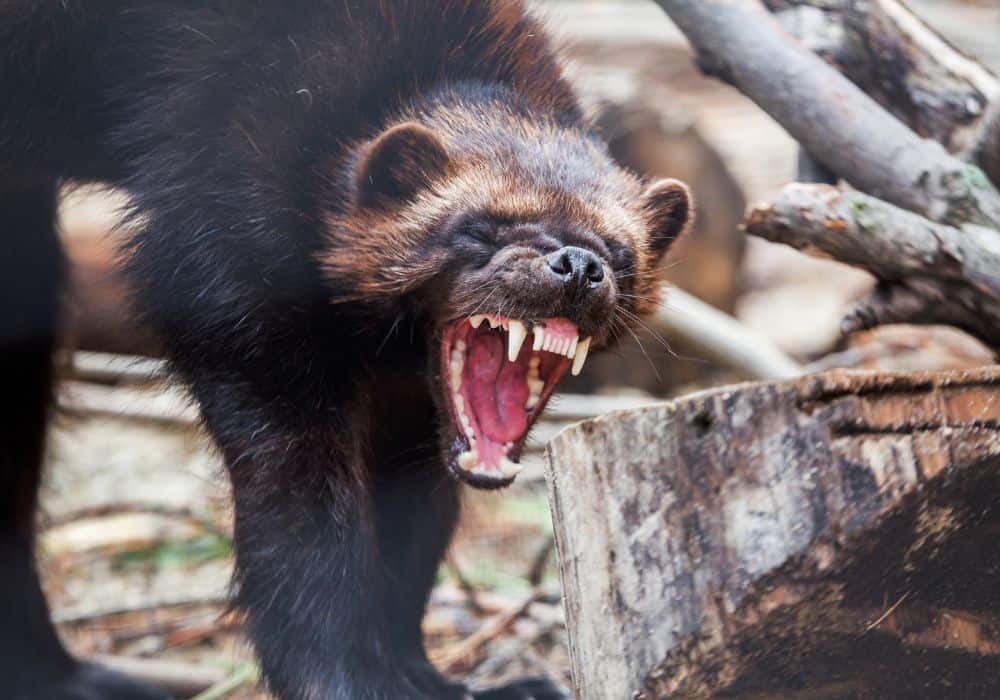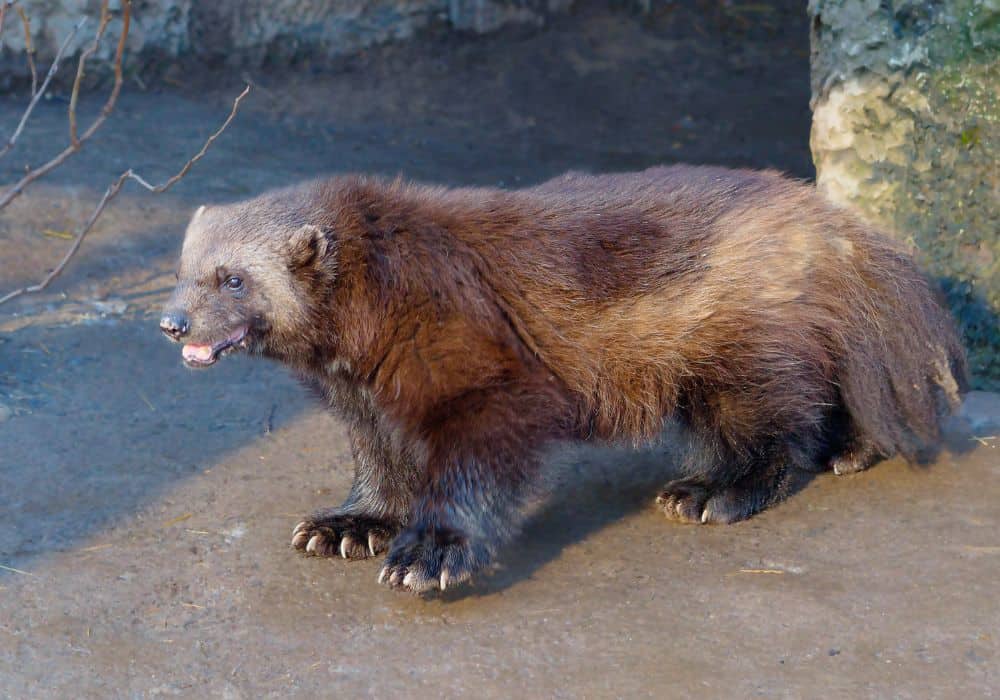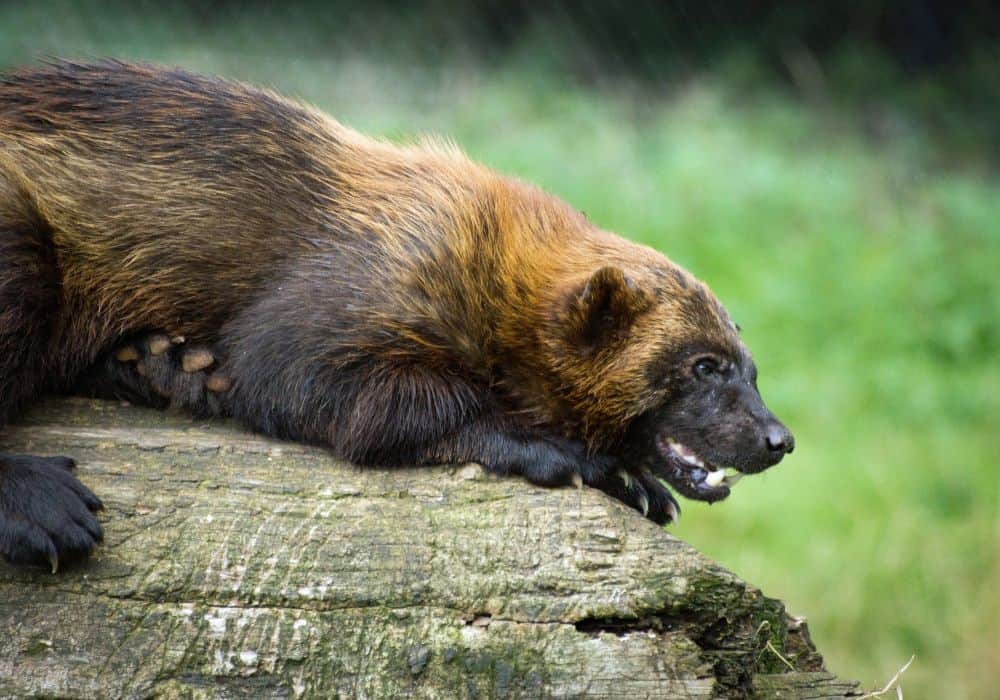Hear the word wolverine, and you might well be inclined to think of the sideburn-wearing, spiky-haired, muscular and metallic-boned Hugh Jackman á la the X-Men movie franchise and popular Marvel comic series. But did you know that the famous character actually took their name from a real life animal?
Wolverines are members of the weasel family Mustelidae, an animal group which includes the stoat, weasel, badgers, ferrets and martens. In fact, they’re the largest, and inarguably the most vicious Mustelid still in existence. Wolverines can be found right across the very northernmost parts of the Northern Hemisphere, from America and Canada, to parts of Europe and Russia, as well as China in Asia, and Finland, Sweden and Norway.
Fascinating animals, not many people have been taught much about wolverines growing up, and yet they have played an important part in much native folklore and mythology, especially amongst First Nations and indigenous peoples in North America.
Today, they go by many traditional nicknames, including (but not limited to) woods devil, Indian devil, and ommeethatsees (a Cree word), carcajou (French), quickhatch (from the East Cree word kwiihkwahaacheew), nasty cat, and skunk bear. Scientifically, the wolverine is called Gulo gulo, which translates from the Latin into “Glutton glutton”! We’re about to find out why…
Habitat, Habits & Behavior
Wolverines are mammals with elongated, muscular bodies and low centers of gravity. They move on all-fours, close to the ground, often covering large distances in search of prey. They are covered in a thick coat of brown-gold fur, and have long snouts filled with razor sharp teeth, to compliment their strong, ferociously-clawed forepaws.
These animals prefer to hunt alone, and are typically solitary, except during the mating seasons and when the females are raising their young (which they will often do for up to two years, until the young also reaches sexual maturity).
Wolverines are ferocious natural predators, but are actually also omnivores, meaning that they’ll also eat fruits, berries and plant matter, in addition to meat. In fact, it’s for their complete lack of inhibition when it comes to food that they were given the scientific name Gulo gulo by the scientific community (see above).
Wolverines inhabit the most northerly parts of the world, which is why they have such thick fur coats. Unfortunately, wolverine’s fur remains a highly sought-after commodity, used for the lining of fur coats and hoods.
The wolverine male marks his scent with spray from anal glands, in much the same way a skunk does (hence the nickname ‘skunk bear’). This also alerts female wolverines in heat his presence. Once pregnant, the females burrow beneath the snow (sometimes up to 15 feet deep!), creating a den for themselves in which they will give birth to kit litters of around 2-3 wolverine babies in late winter, early spring.
Kits are born blind and covered in pure white fur, which is most likely a defense mechanism, as the white will blend into the snows of boreal forests in places like Alaska, protecting the kits from predation. Their breeding season lasts from May through to August.
Wolverines in the wild live around 5 years, but some have been found to have reached ages of around 17. They can run at top speeds of 48km/h, and may weigh up to 25kg.
What do Wolverines eat?
When it comes to their diet, wolverines are not fussy. They are tremendous survivalists, dining on just about anything you can think of in order to stay strong and healthy in the harsh taiga and tundra conditions of the extreme north.
In fact, male wolverines may range over a territory as large as 260 square miles searching for food, whilst the home ranges of female wolverines can cover up to around 115 square miles.
As we’ve already said, wolverines will eat just about anything they can get their hands on, alive or dead. They’re just as happy to forage for berries as they are hunting small animals, killing hibernating prey, and plundering the dead carcasses of larger animals.
Here’s a comprehensive list of all the things wolverines will happily eat:
- Deer
- Rabbits
- Voles
- Moose
- Caribou
- Carrion
- Insects
- Grubs
- Berries
- Roots
- Elk
- Rabbits
- Voles
- Beavers
- Otters
- Gophers
- Foxes
How do Wolverines hunt?
Wolverines are supremely resourceful animals, and so hunt in a variety of different ways, resorting to whichever methods best ensure their chances of survival that given day. By and large, you’ll find that wolverines in the wild tend toward scavenging.
Scavenging, in the animal kingdom, is the act of feasting on the leftovers of other predators, or simply on the carcasses of animals too large for the eater to have hunted, and which died of natural causes. In the case of the wolverine, they’ll often dine on caribou and moose, but rarely fell these beasts themselves.
When it comes to hunting, rather than scavenging or foraging (for berries and root vegetables), wolverines like to do this after dark, and by themselves. Setting out, they use their extremely keen sense of smell to detect hibernating prey buried deep beneath the snow. They can even smell a sleeping rabbit 20 feet below the surface of the frost!
Once a wolverine has sniffed out their prey, they use their powerful forelegs and claws to dig a tunnel straight down into the burrow of the hibernating animals before guzzling them up.
What Animals Hunt Wolverines?
Despite the ferocious reputation of wolverines, they don’t exist at the very top of the food chain. Instead, there are some animals which remain brave enough to hunt these massive weasel-like killers. Predominantly, wolverines are hunted in the wild by wolves, American black bears, cougars, golden eagles and brown bears.
Most commonly, however, it is the Grey Wolf which is responsible for the evacuation of a wolverine population from any given area. These large dogs are able to hunt in packs, which gives them a clear advantage over the solitary wolverine, who – nevertheless – has been caught on camera more than once putting up quite the fight against these predators!
Other documented accounts of predation on wolverines includes the reactive aggression of bears from whom wolverines have attempted to steal food. Ultimately, however, wolverines remain a fairly dangerous and unlikely prey, which most predators will think twice about before attacking.
Wolverine Conservation Status
In Europe, where urbanization and gross deforestation, as well as global warming, have drastically reduced wolverine habitats, the wolverine is listed as a ‘Vulnerable Species’. However, across the rest of the globe, the animal is categorized on the IUCN Red List, meaning that its conservation status is of ‘Least Concern’.
Once upon a time – especially back in the days of the American trapper frontiersman – wolverines were extensively hunted for their luscious fur pelts.
These days, however, whilst it remains legal to hunt wolverines in some parts of the world, in most areas (such as in Colorado, Idaho, Wyoming and Montana) wolverine populations are protected from hunting, and the practice has dramatically decreased in popularity.
5 Interesting and Unique Wolverine Wildlife Facts
Do wolverines attack humans?
Whilst, theoretically, a wolverine could do quite a bit of damage to a person, you’ll be glad to learn that there has never been a single documented case of a wolverine attacking a human. In other words, though they might look vicious, you have little to fear from these creatures. Just take a look at how close this biker got to one!
Do wolverines store their food?
This might seem an odd question, but believe it or not scientists and biologists observing wolverine behaviors have actually found evidence to support the theory that wolverines like to store surplus food for later.
During summer months, wolverines have been observed using hollowed out tree trunks and other such nooks to store their kills or the spoils of their scavenges for days when their hunts are unsuccessful.
Even more impressive, during the winter wolverines will often bury excess meat underground, below the frost, using the tundra as a natural refrigerator to keep their meat fresh and safe to east later.
Do wolverines eat the same thing all year round?
A Scandinavian study tracked the eating habits of over 40 wolverines over a wide area. The scientists wanted to determine if there were behavioral patterns to be found in the wolverines’ diet.
What that study determined, however, was that wolverines adapted to the changing availability of food, whatever those changes may be. Rather than exhibiting clear patterns all year round, wolverines instead tend simply to eat whatever they can find, on day-by-day basis.
Do wolverines hibernate?
No, wolverines don’t hibernate during the winter like many other northerly animals. Instead, they use their thick coats and burrowing abilities to keep warm, whilst hunting and preying upon those poor unfortunate animals who do hibernate.
Are wolverines stinky?
Yes! Wolverines are smelly, just like skunks, because they too excrete a really potent liquid from their anal glands when marking the boundaries of their expansive territories.
Conclusion
Wolverines are absolutely awesome animals, and not to be feared by humans. Once hunted and killed for their furs, today they are protected across much of the globe, surviving – as they’ve always done – by employing a glutinous, non-fussy approach to food, and adapting to changing conditions year round.



